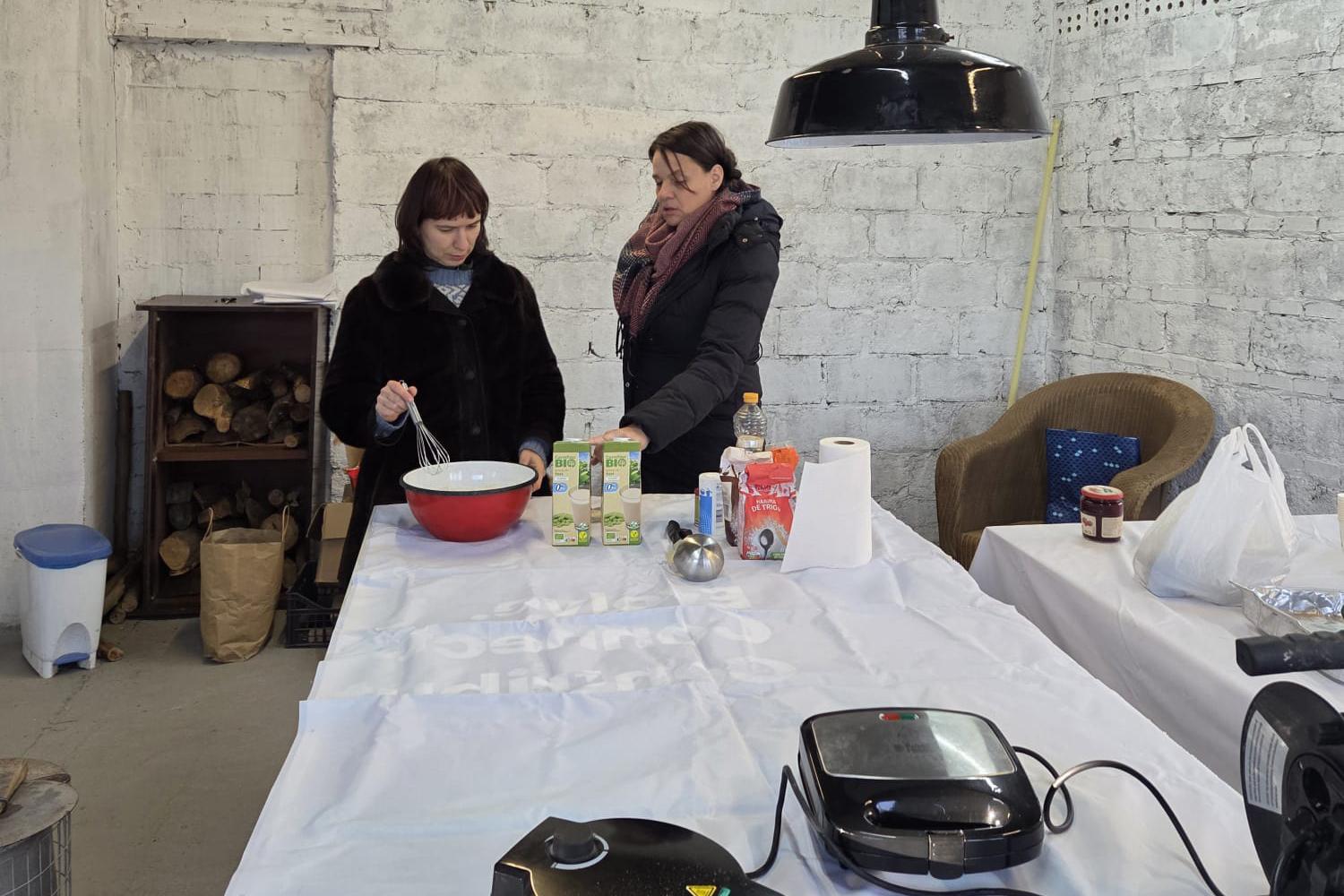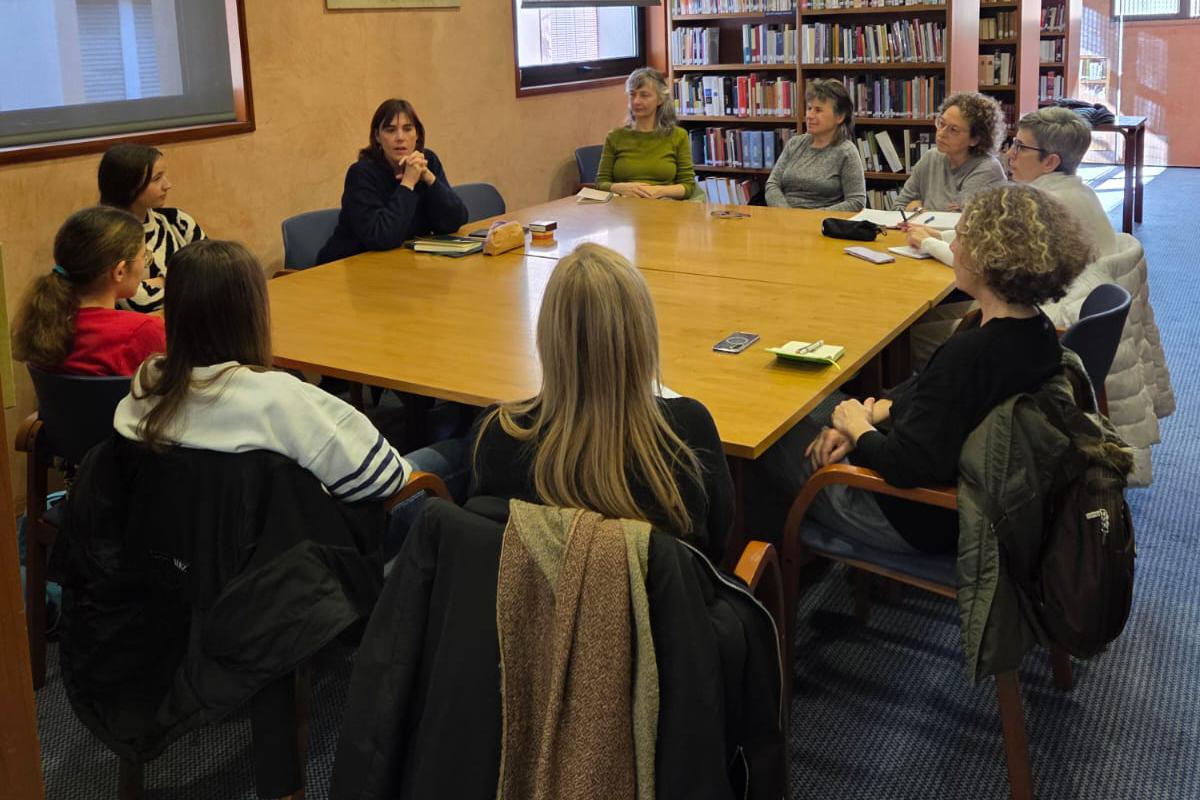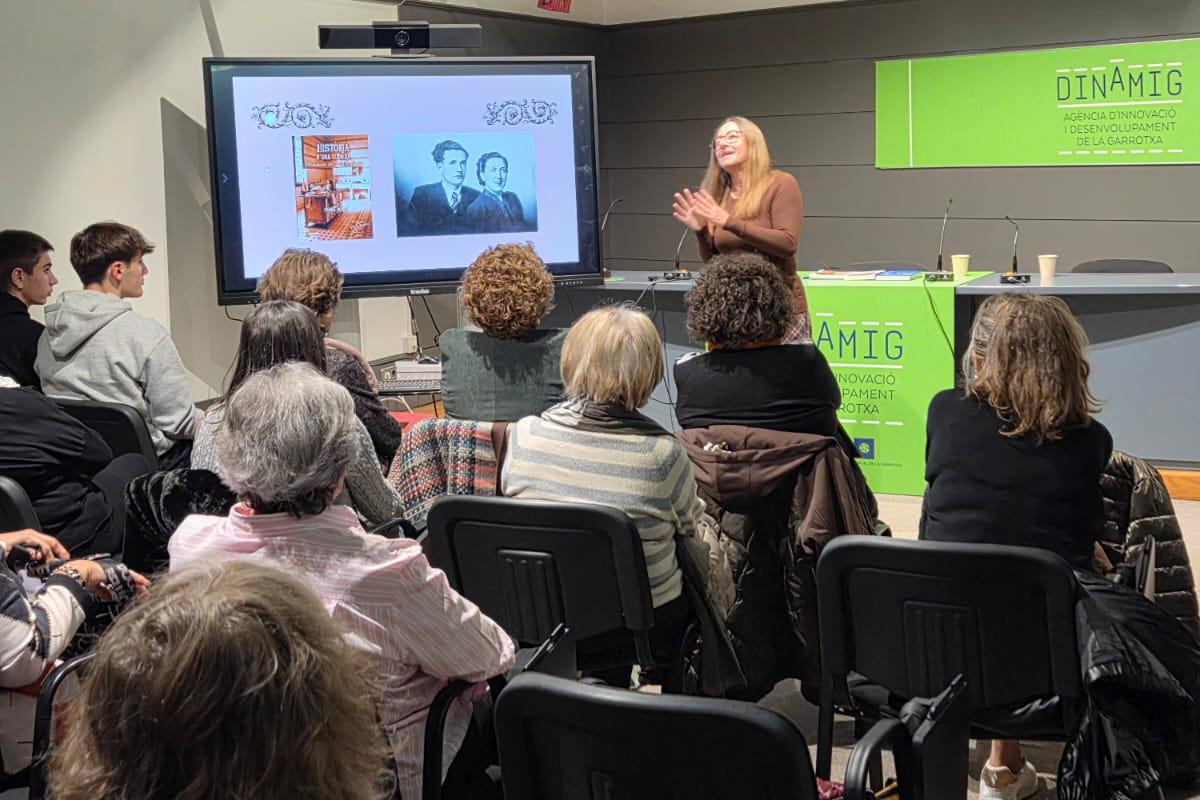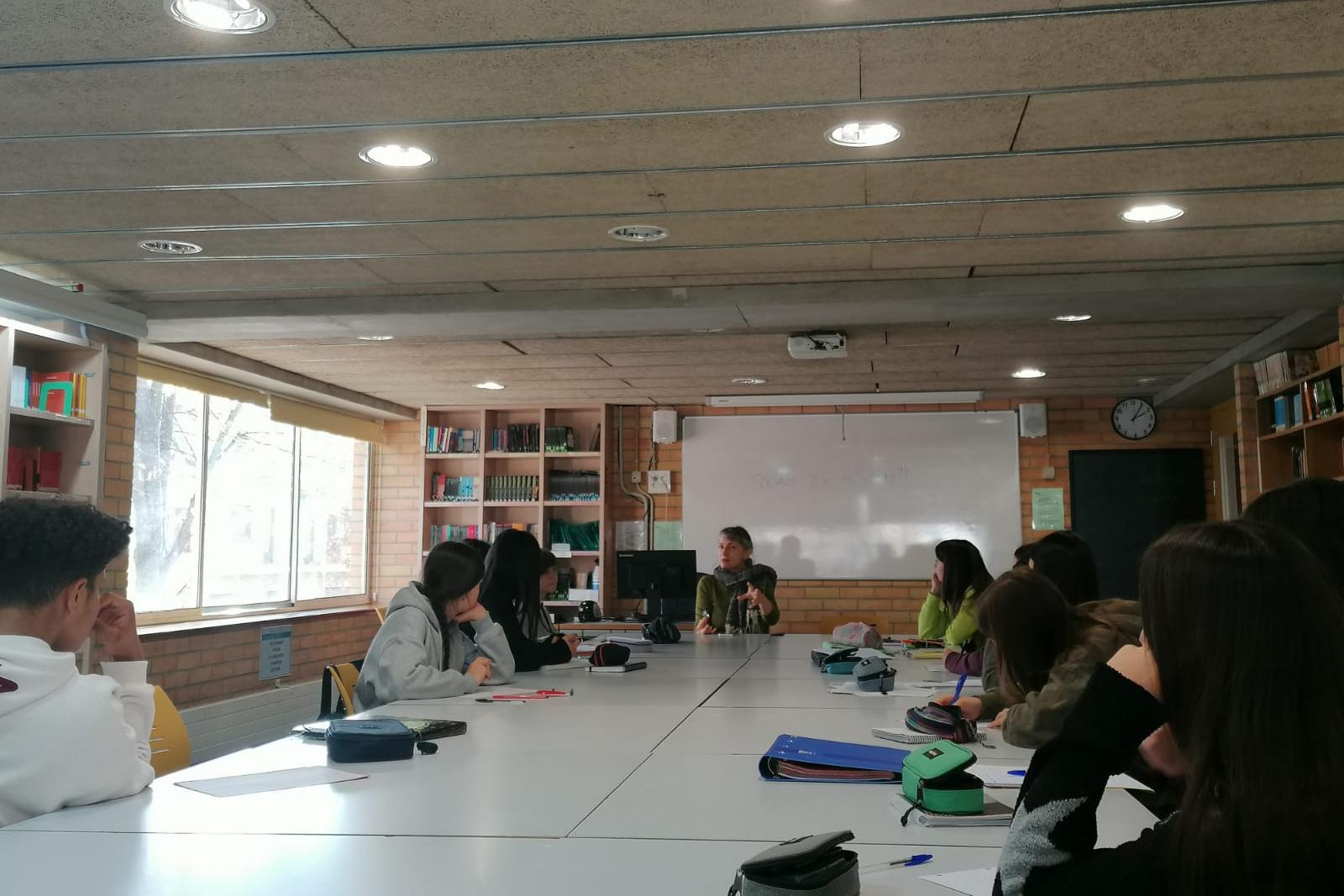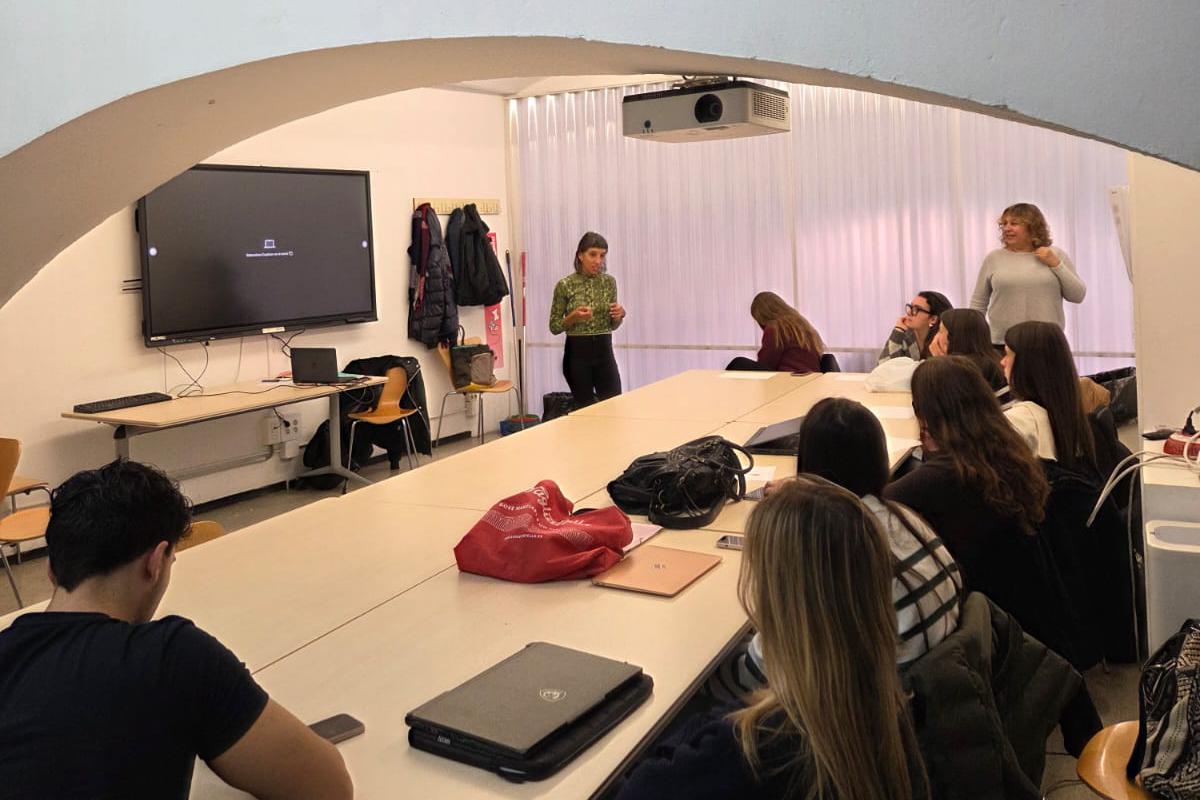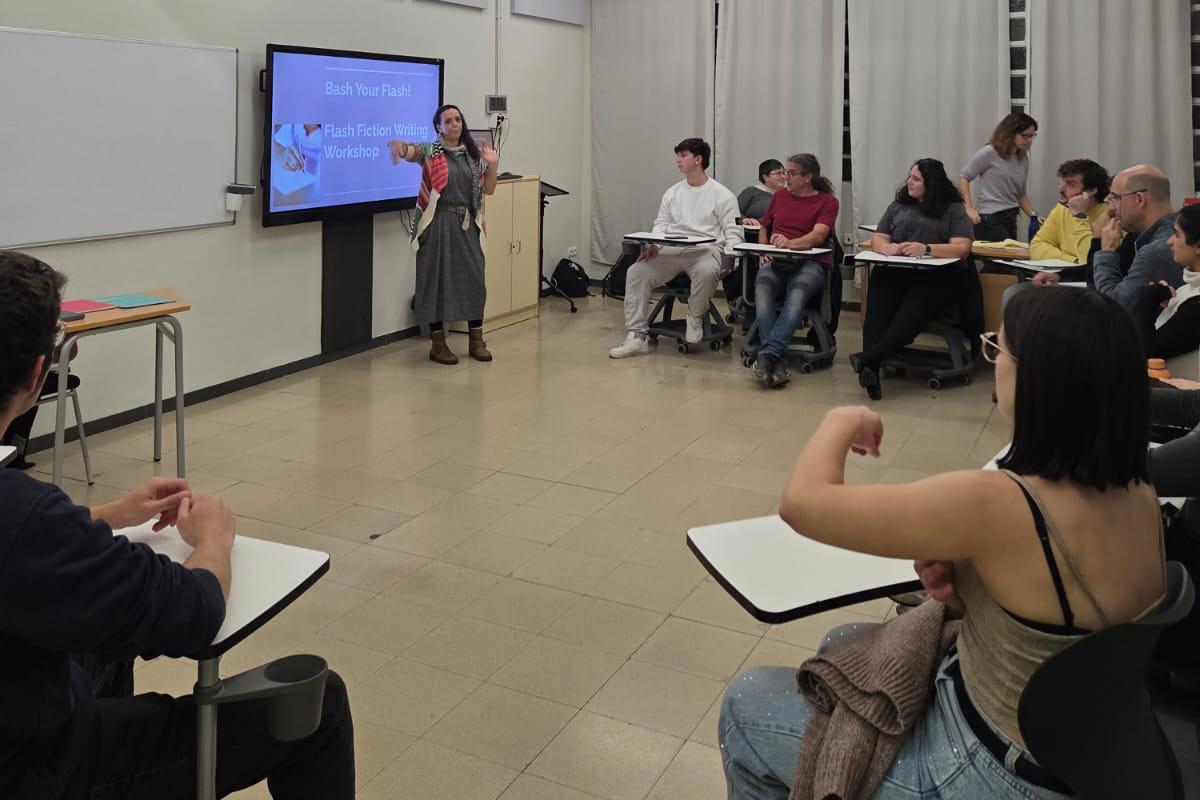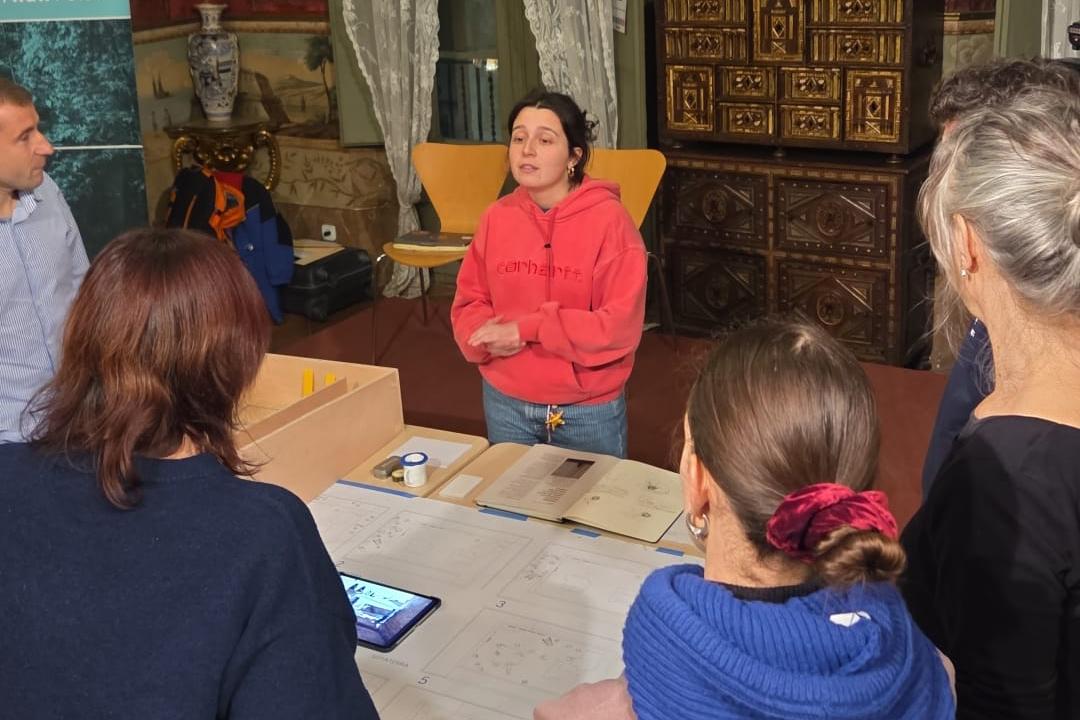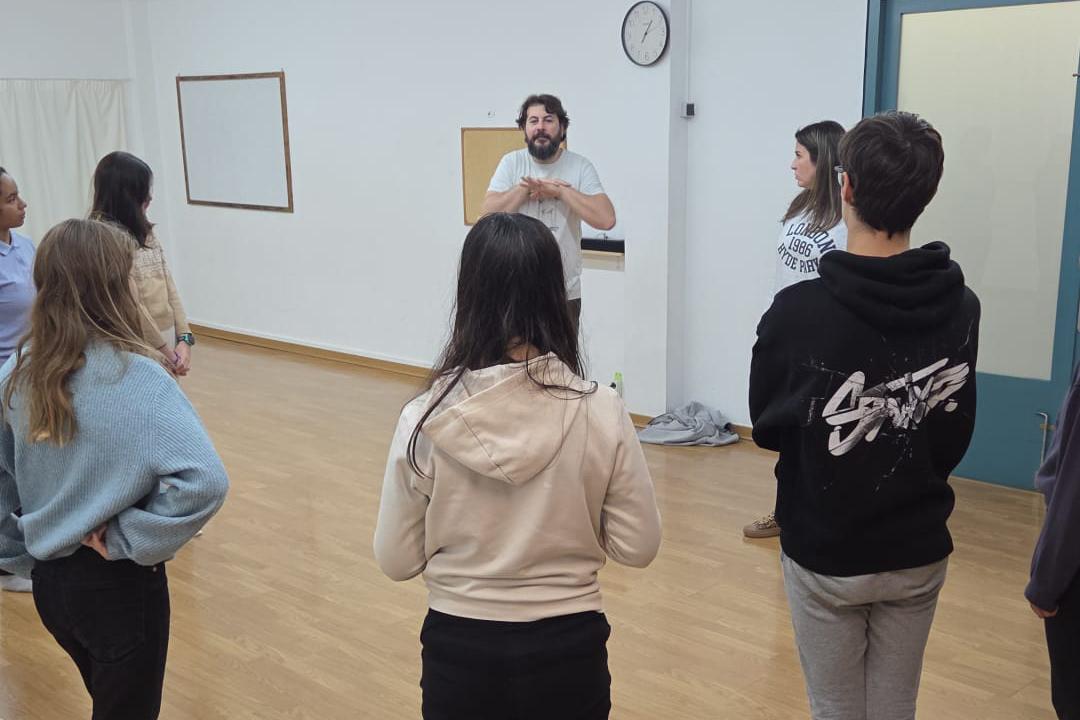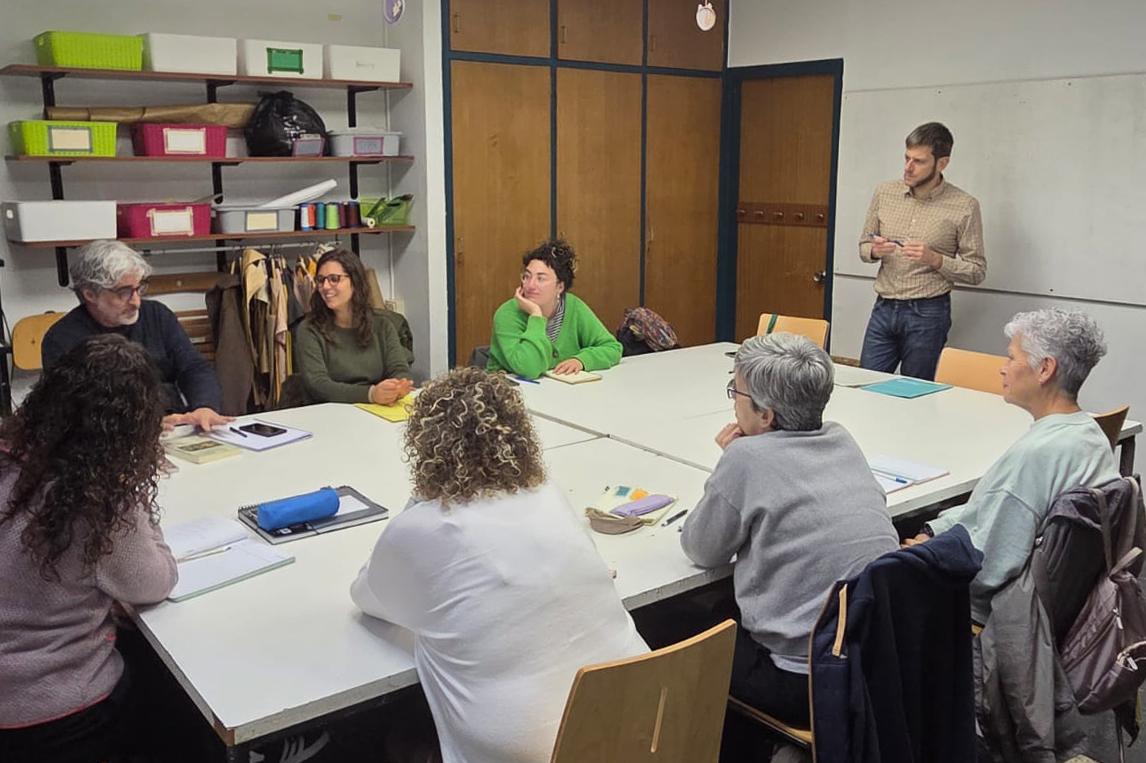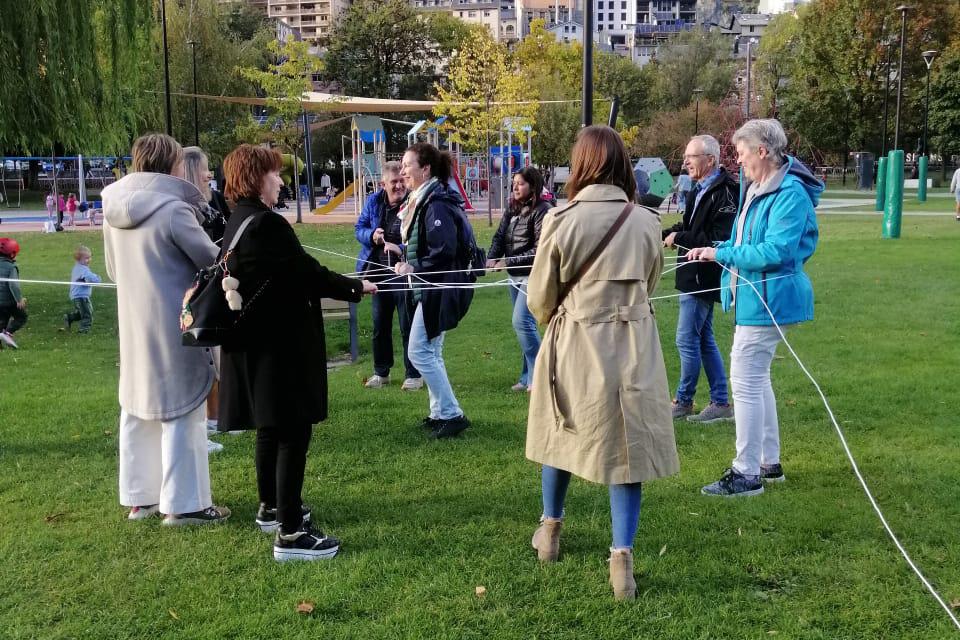La Garrotxa, an enclave for local development
Friday, 25 January 2019 , Olot , Isaac Cos
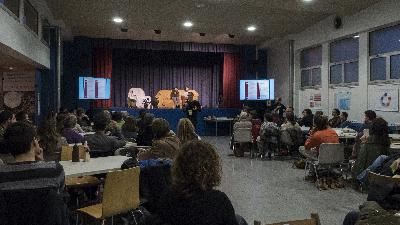
La Garrotxa, an enclave for local development
The Resilient Territory Working Sessions took place on 24th and 25th January, between Olot and La Vall d’en Bas
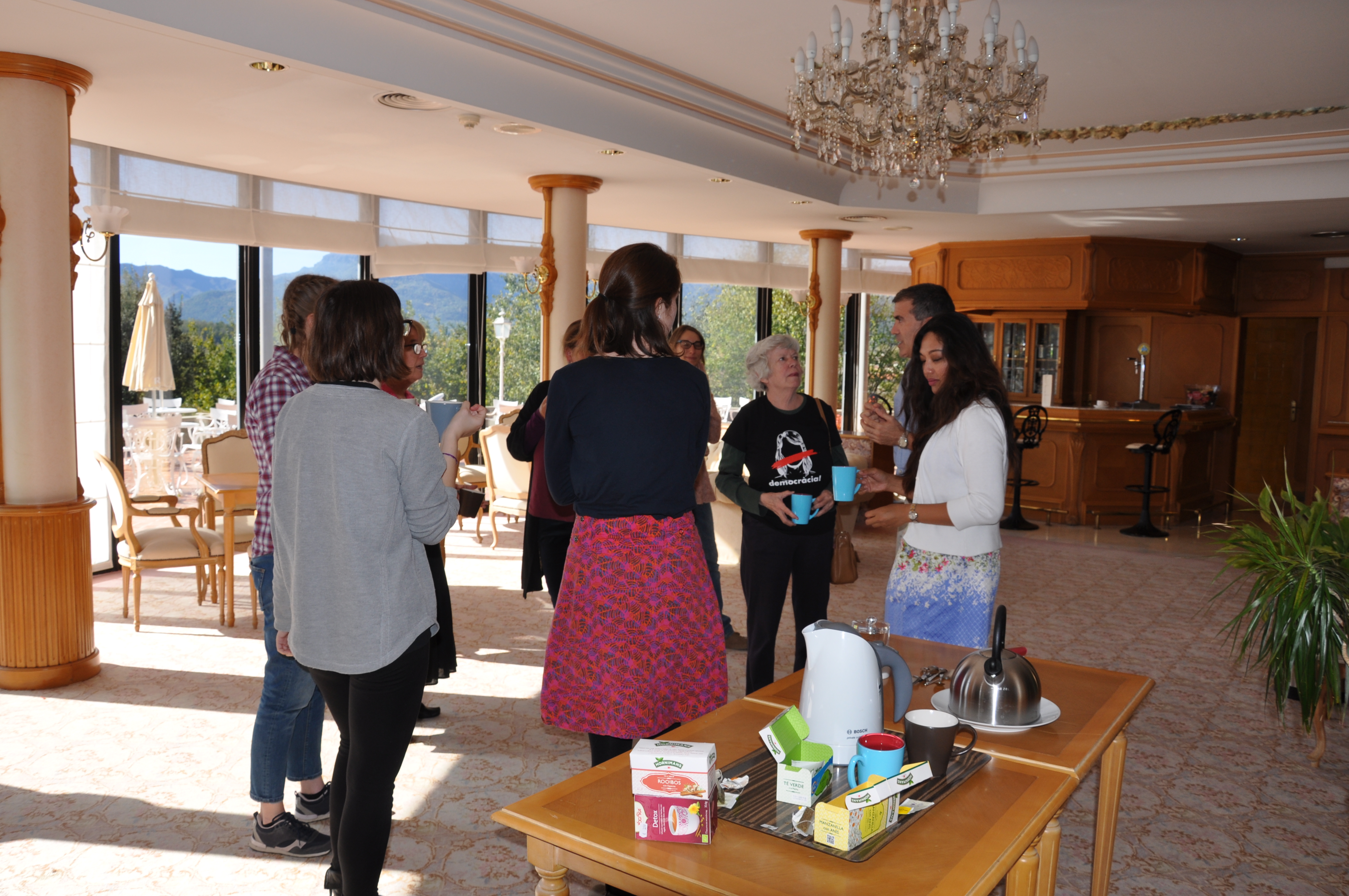

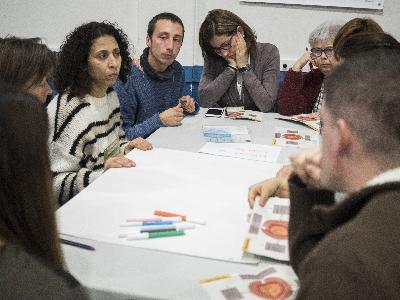
La Garrotxa was chosen as a resilient territory by the Municipalities in Transition organisation at the beginning of 2018. In total, six municipalities from around the world were selected out of more than seventy candidates to carry out a pilot programme on municipal transition that, in the future, could create local action frameworks for change. To inaugurate the project, the Resilient Territory Working Sessions took place on 24th and 25th January 2019, between Olot and La Vall d’en Bas.
Numerous presentations and workshops were conducted over these two days, with guests coming from other locations in Catalonia and Spain. Broadly speaking, the activities were developed in three differentiated categories: firstly, there was a social focus that was open to the public, to introduce the concept of resilience and the Municipalities in Transition project; secondly, there was a technical focus, devised for local actors; and finally, a political focus, intended to transfer the municipal transition to the county’s councillors and politicians. This form of programming, concentrating on different areas, succeeded in taking the Resilient Territory Working Sessions to all the society actors on whom greater interaction depends to successfully tackle the challenges of the future.
Key to the success of the event was the collaboration between the different organising bodies, amongst which there is Resilient Earth (a not-for-profit cooperative established in La Garrotxa), ADRINOC (Association for the Integral Rural Development of the north-western zone of Catalonia), MiT (Municipalities in Transition), the Faber Residency (Residency for arts, sciences and humanities in Olot), and also representatives from the local administration and councils: Olot City Hall, the Municipal Institute of Education and Youth, the Consorci d’Acció Social de la Garrotxa (La Garrotxa Social Action Consortium), the Consorci SIGMA (SIGMA Consortium), the Consorci de l’Alta Garrotxa (Alta Garrotxa Consortium), DinàmiG, the development and innovation agency, La Garrotxa County Council and the La Garrotxa Volcanic Zone Natural Park.
Each of these entities worked together to ensure the sessions were a success. For example, Resilient Earth, that comprises educators and activists, took charge of the organisation and content of the sessions, with the support of ADRINOC. The Faber Residency invited the majority of speakers who came from further afield to stay at the Residency so that they could have a space to relax in and also exchange experiences away from the working sessions. For their part, the institutions provided the venues and equipment necessary to carry out the various scheduled activities.
Social focus, Thursday 24th January (5.30 pm to 8.30 pm)
Èrika Zàrate and Òscar Gussinyer, founders of Resilient Earth, welcomed the attendees, who exceeded the seating capacity of 120 people. It was then the turn of Jordi Terrades, Manager of ADRINOC, who briefly explained what resilience and local transition consists of.
When we talk about resilience, we are talking about threats and challenges. The system we live in – that is, our model of society – has a series of problems that put its capacity to transform itself to the test. That said, the changes required can often not be carried out by the institutions because they do not have the mechanisms necessary to respond to them or because their structure does not permit it. It is for this reason that the participation of the general public is so vital for achieving effective and real changes. If we want to live in a comfortable environment, where it is possible to have a good quality of life, work needs to be done at a local level, from the territory, and the best way to do this is through the involvement of the public, organised through local entities and movements.
Resilience, therefore, is the capacity of a territory to tackle the challenges that are threatening its very security. We currently find ourselves in a major environmental crisis. Within the system, any one problem is connected to many other factors, to such an extent that a climate issue can also cause political, economic, social and other impacts. For this reason, one specific change is not enough: a global response is required. Therefore, if we want a society that is more resilient to all these problems, we need to find a local response in each of the areas mentioned.
The key to achieving this lies in a closer and more dynamic collaboration between the general public and their institutions. If a municipality can rely on the participation of local entities, the changes that can be achieved are much faster and more effective, and can be felt in a much more tangible way. It is for this reason that grassroots movements are so important.
Next, a round table got underway, formed of experts in municipal transition. The various contributions were presided over by Carolina Astudillo, who is a psychologist, activist and coordinator at QSL serveis culturals. The speakers shared their experiences in municipal transition with the public:
Sílvia Retortillo is an activist and consultant at Carcaboso Council, a rural municipality situated in the north of Càceres Province (Spain). During her intervention, she described local policies that the council had implemented: edible gardens, school vegetable gardens, community hencoops, incentives to bioconstruction companies, the marketing of ecological products that are handcrafted and handmade by locals, etc.
Marcos Tur is an eco-designer and permaculture expert. He presented the association he has founded, “Jesús en Transició”. It takes its name from the Ibizan village of Nostra Senyora de Jesús and seeks to promote sustainability and resilience in a region where 80% of food is imported from outside.
Gorka Egia is the mayor of the rural municipality of Orendain (Guipuzcoa). He was one of the first in Spain to apply Christian Felber’s “Economy for the Common Good”. Drawing on this, the council has developed a democratic assembly, a survey on life quality and participatory economic management, amongst other things.
After the interventions, the public were invited to ask questions.
Workshop on resilient systems
In the second part of the session, a practical workshop took place to train the attendees and their relevant entities on the culture of resilience. The theoretical framework used was the systems theory. The content was put into practice through group activities that had been prepared by the organisers.
First of all, they began by explaining the “adaptive cycle of resilience”. Our system – any system: ecological, social or economic – is formed of a rigid structure based on rules and institutional control and also by a group of creative individuals, the freedom of whom often comes up against the system boundaries which prevent them from thriving. The relations between the structure and creativity give rise to four phases: one of growth, one of conservation, one of release (or chaos) and one of reorganisation. Put another way: the system has phases of growth and crisis, but, in between, the interconnections between individuals are what can make reorganisation and recovery faster or slower. And it is precisely here where collaboration between administrations and the general public comes into play. Greater connectivity between them will permit the system to overcome challenges sooner and become more resilient in the future.
To illustrate this, Èrika Zàrate and Òscar Gussinyer organised a group activity where people from the audience stood up and began to walk round the edge of a square marked on the floor. At this moment, they represented the release and creativity of the system. Then suddenly, they had to form groups, firstly in pairs and then in larger groups. As the size of the structure grew, so too it became more difficult to build relationships. From here, the organisers went on to play with possible combinations, introducing roles of public administrators or social leaders, whilst the others represented the general public. This enactment made clear how important connections between different society actors are to generate changes.
Technical focus. Friday 25th January (9 am to 2 pm)
Jordi Terrades, Manager of ADRINOC, started by welcoming the attendees who, in this instance, were in their entirety from the network of social movements and entities. The purpose of this session was to educate the different collectives on the principles of municipal transition so that they could go on to apply them whilst developing their operations in the local context, and thereby begin to generate strategies for change. To this end, Jordi Terrades made a short introduction recounting what resilience is and how grassroots movements can be created.
Next to take the floor was Juan del Río, a biologist, activist and educator, and coordinator at Municipalities in Transition. His intervention had an ecological focus. He explained that we are living though an age that has been christened by biologists as the “Anthropocene”, which is characterised by the impact of human activity and the consequences of this: climate change and extinction. To find a way out of this situation, sustainable policies are needed that will offer an alternative to fossil fuel and the exponential growth of the economy.
Faced with collapse, our society has mapped out two possible scenarios: apocalyptic destruction and the scientific miracle of space travel. Between these two visions, between tragic and euphoric, resilience is a real and optimistic alternative, as it is based on the principle that the system already possesses all the tools to find solutions to its problems. All that is required is that they are used correctly and with a sound strategy.
Juan del Río explained that this strategy is Municipalities in Transition. This project has worked through several phases until establishing a network of pilots, one of which at the moment is La Garrotxa. From this point on, the plan is to implement transition strategies and data collection that will permit validating or rejecting the process followed.
Workshop on Sustainable Development Goals
After the introduction by Juan del Río, Òscar Gussinyer launched a workshop on Sustainable Development Goals (SDGs). There are a total of 17 SDGs that form the core of the 2030 Agenda approved by the UN at the 2012 summit on climate change. All these goals need to be able to be achieved simultaneously, and only in this way will it be possible to affirm that we live within a sustainable system.
It is important that the SDGs are implemented jointly, as each one is related to the others. For example, Goal 1: “end of poverty” is related to Goal 4: “quality education” and, also, to Goal 8: “decent work and economic growth”. The same happens with Goal 3: “health and well-being”, Goal 13: “action to combat climate change” and Goal 15: “terrestrial life”. Without achieving one, the others cannot be achieved. Through this systemic principle, the SDGs can be grouped into three major areas, which are: environmental, social and economic. The relationships arise inside and outside these large groups, meaning, therefore, that without a good natural environment, there cannot be good social conditions and without good social conditions there cannot be a good economy.
To demonstrate this, the organisers prepared a group activity. The participants shared out the SDGs. Each one had to design challenges to achieve these SDGs at a local level, within the municipality. Afterwards, they formed larger groups by area: social, economic and environmental, and defined joint strategies to achieve all the SDGs simultaneously. Finally, transversal groups were created with representatives from each area and they had to devise viable goals for each of the SDGs. This helped illustrate the interrelation between all these sustainable development goals. The purpose of the workshop was so the different social actors could learn to work jointly with other sectors to apply sustainable strategies and generate resilient transformation at a local level.
Political focus. Friday 25th January (6 pm to 8 pm)
The Mayor of Les Preses, Lluís Amat, presented the final part of the Resilient Territory Working Sessions. The event took place at Can Trona Civic Centre, a cultural venue located in the midst of nature, in La Vall d’en Bas. In fact, it is from this intersection that the word “TRoNA” was born (with letters from “culture” and “nature”). The Mayor told how there are a total of 7 municipalities that border La Vall and all have markedly rural characteristics, which make them highly-suited for working with the principles of sustainable development and resilience.
Afterwards, it was the turn of Joan Espona, Head of the County Council, who celebrated the decision of the MiT for having chosen La Garrotxa to be one of the six zones for the pilot programme. He underlined the huge network of social movements in the region and the large number of administrations that work there as points of merit that justify this decision.
Political representatives from all the municipalities in La Garrotxa attended the event, and this bestowed it the institutional tone that the organisers were seeking in this final part of the programme. Pep Berga, Councillor for Culture at Olot Council, presided over the first round table, which was formed of Juan del Río, MiT coordinator and Arnau Queralt, Director of the Consell Assessor per al Desenvolupament Sostenible de Catalunya (Advisory Board for the Sustainable Development of Catalonia).
Over recent years, Arnau Queralt has been responsible for adapting the UN’s SDGs to the Catalan context, setting out specific milestones for the territory. His team is divided into departments and each one is tasked with carrying out one of the 17 SDGs.
In the second part of the session, another round table was organised, in this case comprising mayoresses and mayors who have applied local development measures. Some were well known owing to political tensions over recent weeks, such as Dani Cornellà, Mayor of Celrà Council; Margarida Feliu, Mayoress of Viladrau; Gorka Egia, Mayor of Orendain (Guipúzcoa); and Lorena Rodríguez, Mayoress of Carcaboso (Cáceres).
The Mayor of Ridaura, David Jané, oversaw the interventions. The guests explained their way of making participatory policies with a desire to generate changes in the public administration, to make it more sustainable and co-responsible. They all had two things in common: they represented rural municipalities and had implemented policies for resilience.
For example, Dani Cornellà created, for the first time, the role of a councillor for public participation; Margarida Feliu permitted a vote on participatory budgeting in Viladrau; Lorena Rodríguez created a “council for the elderly” to involve older people in municipal decisions; and Gorka Egia applied the “Economy for the Common Good” to his small municipality of Orendain.
The event finished with a round of open questions to the councillors and members of the local political parties.
You can find all the videos of the presentations and the round tables that were made available for streaming via this link: https://www.garrotxaresilient.cat/


